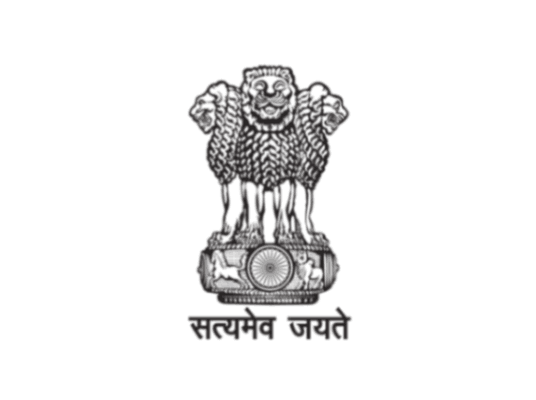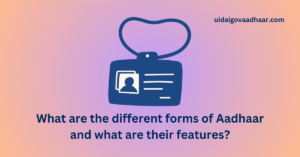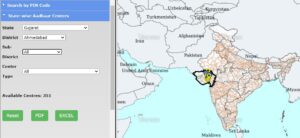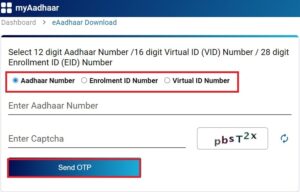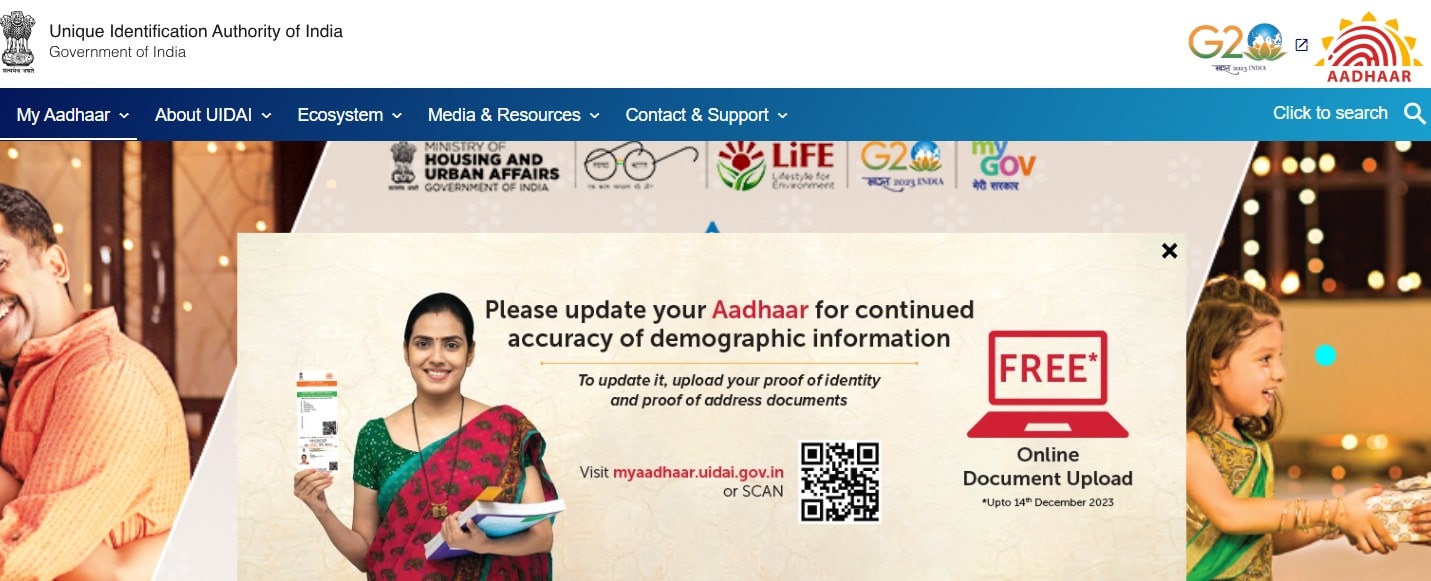
UIDAI is the responsible body for issuing the Aadhaar card for citizens. Aadhaar is a 12-digit Unique Identification Number (UID). Let’s understand the Full form of UIDAI and other details related to UIDAI in this article below.
UIDAI Full Form
The UIDAI full form is the Unique Identification Authority of India. It is a statutory authority established in 2009 under the provisions of the Aadhaar (Targeted Delivery of Financial and Other Subsidies, Benefits, and Services) Act, 2016.
The primary mandate of the UIDAI is to issue Unique Identification numbers (UIDs), also known as Aadhaar numbers, to all residents of India. Aadhaar serves as a reliable proof of identity and address for individuals, enabling them to access various government and non-government services efficiently.
Also Read About:
| UIDAI Login | Download Aadhaar Card |
| Apply for an Aadhaar Card | Order Aadhaar PVC Card |
| Check Aadhaar PVC Card Status | Update Aadhaar Details |
Mission of UIDAI
The mission of the UIDAI is to establish a unique identification system for residents of India that is robust, scalable, and inclusive. The authority aims to create a platform that empowers residents to assert their identity with ease and securely access a wide range of services and benefits.
Objectives of UIDAI
The UIDAI has set forth several objectives to fulfill its mission. Let’s explore these objectives in detail:
- Unique Identification: The primary objective of the UIDAI is to provide a unique identification number (Aadhaar) to every resident of India. This 12-digit number, along with the associated biometric and demographic data, serves as a reliable and verifiable proof of identity and address.
- De-duplication: The UIDAI is responsible for ensuring that each Aadhaar number is unique and is not duplicated across the system. This is achieved through a rigorous de-duplication process that involves the collection and verification of biometric data (fingerprints and iris scans) and demographic information.
- Authentication Services: The UIDAI provides authentication services that enable service providers, government agencies, and other authorized entities to verify the identity of individuals based on their Aadhaar numbers and associated biometric or demographic data. This authentication process ensures secure and efficient delivery of services and benefits.
- Targeted Delivery of Services: One of the key objectives of the UIDAI is to facilitate the targeted delivery of various services and benefits to eligible residents. By linking Aadhaar numbers with service delivery mechanisms, the authority aims to reduce leakages, eliminate duplicates, and ensure that benefits reach the intended beneficiaries.
- Inclusion and Empowerment: The UIDAI strives to promote financial and social inclusion by providing a universal identity to all residents, including marginalized and underprivileged sections of society. Aadhaar empowers individuals to access various services and exercise their rights without discrimination.
- Security and Privacy: The UIDAI places a strong emphasis on maintaining the security and privacy of the personal data collected during the Aadhaar enrollment process. The authority has implemented robust security measures and adheres to strict data protection policies to safeguard the confidentiality of residents’ information.
- Efficient Governance: By streamlining identity verification processes and enabling efficient service delivery, the UIDAI aims to contribute to better governance and reduce administrative costs for government agencies and service providers.
- Facilitation of E-Governance: The UIDAI’s objectives also include facilitating the implementation of e-governance initiatives by providing a reliable and secure identity platform. Aadhaar can serve as a foundational identity for various digital services and transactions, promoting transparency and accountability.
- Fostering Innovation: The UIDAI encourages the development of innovative solutions and services built upon the Aadhaar platform. By providing a robust identity infrastructure, the authority aims to foster innovation in various sectors, such as financial services, healthcare, education, and e-commerce.
- Collaboration and Partnerships: The UIDAI actively collaborates with various stakeholders, including government agencies, service providers, technology partners, and civil society organizations, to ensure the successful implementation and adoption of the Aadhaar ecosystem.
Aadhaar: The Cornerstone of UIDAI’s Mission
Aadhaar, which translates to “foundation” or “base” in Hindi, is the flagship program of UIDAI. This 12-digit unique identification number is linked to an individual’s demographic and biometric information. Aadhaar aims to serve as a universal proof of identity and address for every resident of India, irrespective of age or citizenship status.
Components of Aadhaar
- Demographic Information: Includes details such as name, date of birth, gender, and address.
- Biometric Data: Consists of fingerprints and iris scans, ensuring a higher level of authentication.
- Aadhaar Number: The unique 12-digit identification code assigned to individuals.
Also Read About:
| Update Aadhaar Mobile Number | Update Aadhaar Address |
| Update Aadhaar Address Without Supporting Documents | Check Aadhaar Update Status |
Implementation and Reach
The implementation of Aadhaar involves a massive biometric and demographic data collection exercise conducted across the country. UIDAI collaborates with various enrollment agencies to collect and verify information, ensuring accuracy and reliability in the database. Over a billion Aadhaar numbers have been issued, making it one of the largest biometric identification systems globally.
Aadhaar’s Impact
The Aadhaar initiative has had far-reaching implications across various sectors:
- Financial Inclusion: Aadhaar-enabled payment systems have revolutionized financial services, enabling direct benefit transfers and facilitating banking for the unbanked.
- Government Services: Aadhaar authentication has streamlined the distribution of government subsidies, reducing leakages and ensuring targeted delivery.
- Digital Identity Verification: Aadhaar serves as a convenient and secure mode of identity verification for numerous services, including SIM card activation, income tax filing, and more.
Criticisms and Concerns
Despite its transformative potential, Aadhaar has faced criticism and concerns related to privacy, data security, and exclusion errors. The collection and centralization of biometric data have raised apprehensions about potential misuse and vulnerabilities in the system. Additionally, exclusion errors and issues related to authentication failures have affected certain segments of society, especially those facing difficulties in biometric authentication.
Conclusion
The UIDAI, with its mission of establishing a unique and robust identification system for residents of India, has played a pivotal role in promoting financial and social inclusion, efficient service delivery, and good governance. Through its objectives of unique identification, authentication services, targeted delivery of services, and fostering innovation, the authority has made significant strides in empowering individuals and facilitating their access to various rights and entitlements.
As the UIDAI continues to evolve and adapt to changing needs, its commitment to security, privacy, and collaboration remains unwavering, ensuring that the Aadhaar ecosystem remains a reliable and trusted identity platform for all residents of India.
FAQs
1. What does UIDAI stand for, and what is its role?
UIDAI stands for the Unique Identification Authority of India. It is responsible for issuing Aadhaar cards, a 12-digit Unique Identification Number (UID), to residents of India. UIDAI operates under the Ministry of Electronics and Information Technology (MeitY) and aims to provide a universal identification number to every resident.
2. When was UIDAI formed, and what is its core mission?
UIDAI was formed in 2009 under the Government of India. Its core mission is to issue Aadhaar, a 12-digit unique identity number, to residents across India, promoting inclusivity, uniqueness, and uniformity in identity management.
3. What are the objectives of UIDAI?
The primary objectives of UIDAI include providing a unique identification number to each resident, developing a uniform and standardized identity proof, ensuring inclusivity of marginalized populations, and enabling secure identity verification for various services.
4. What is Aadhaar, and why is it considered the cornerstone of UIDAI’s mission?
Aadhaar is a 12-digit unique identification number linked to an individual’s demographic and biometric information. It serves as a universal proof of identity and address for every resident of India, playing a central role in UIDAI’s mission to establish a robust identity infrastructure.
5. What are the components of Aadhaar?
Aadhaar consists of demographic information (name, date of birth, gender, and address), biometric data (fingerprints and iris scans), and the unique 12-digit Aadhaar number assigned to individuals.
6. How is Aadhaar implemented, and what is its reach?
The implementation involves a massive data collection exercise conducted nationwide. UIDAI collaborates with enrollment agencies to collect and verify information. Over a billion Aadhaar numbers have been issued, making it one of the largest biometric identification systems globally.
7. What impact has Aadhaar had on various sectors?
Aadhaar has revolutionized financial inclusion, streamlined government subsidy distribution, and served as a secure mode of identity verification for services such as SIM card activation and income tax filing.
8. What criticisms and concerns have been raised about Aadhaar?
Despite its transformative impact, Aadhaar has faced criticism related to privacy, data security, and exclusion errors. Concerns include the potential misuse of biometric data and issues affecting certain segments of society.
9. How does UIDAI address concerns and criticisms?
Addressing concerns related to data privacy, security, and inclusivity is pivotal for ensuring Aadhaar’s success. UIDAI continues to evolve, shaping India’s digital identity landscape and working towards innovative solutions in governance and public service delivery.
10. What is the ongoing journey of UIDAI and Aadhaar in shaping India’s digital identity landscape?
The journey of UIDAI and Aadhaar continues to evolve, contributing to innovative solutions in governance and public service delivery. While addressing concerns, UIDAI remains committed to providing a unique identity to every resident of India, shaping the nation’s digital identity landscape.
